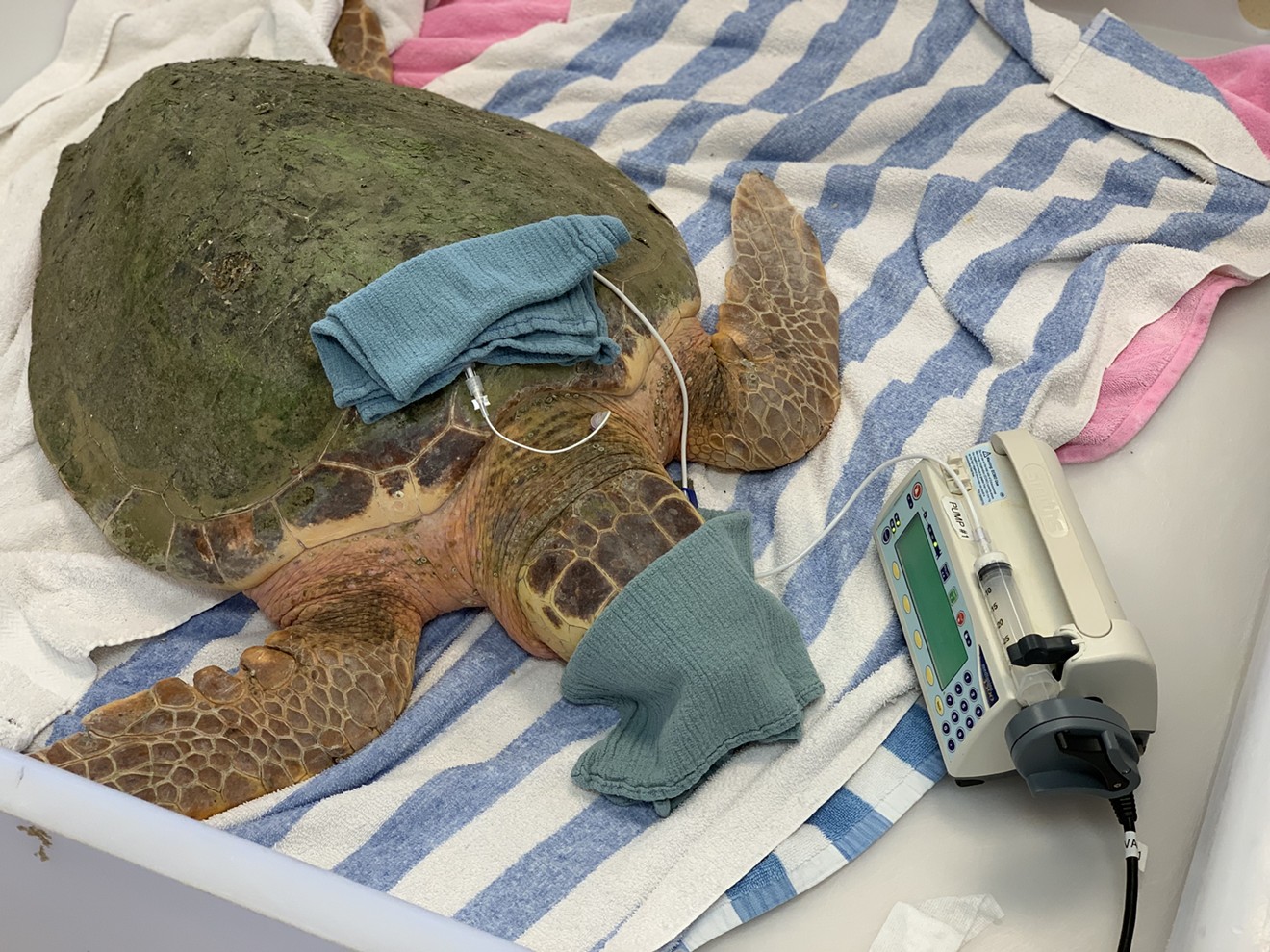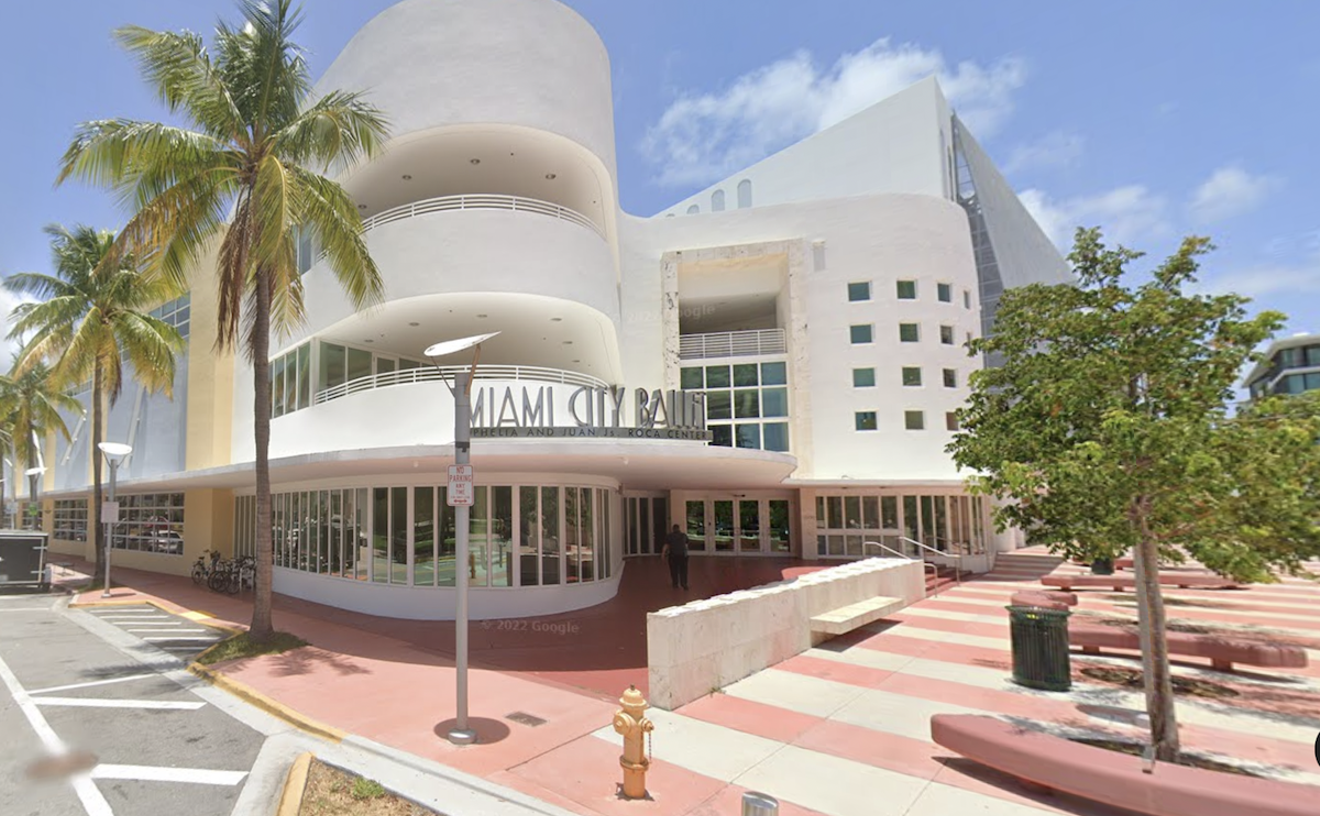Florida's annual nuisance has returned: Red tide has bloomed in the Gulf of Mexico near Naples and already begun to spread during the past week, according to a state map from the Florida Fish and Wildlife Conservation Commission.
The last red tide event that affected Florida lasted for a year and a half, killing hundreds of endangered sea turtles and manatees. But a new medical treatment being tested at the Loggerhead Marinelife Center in Palm Beach County offers hope. Early research shows sea turtles suffering from toxic red tide exposure could benefit from intravenous lipid emulsion, a therapy typically used to treat cocaine overdoses. The treatment involves injecting special fats into the bloodstream to flush out the toxins.
The test, funded by the Morris Animal Foundation, has been successful so far. First, doctors began with a nonendangered model species to try the new medical treatment and determine the correct dosage. When the model species — red-eared slider turtles — began to recover from toxic algae poisoning, the researchers decided to try the treatment on Florida's endangered sea turtle population. Almost 30 turtles have now recovered from red tide poisoning thanks to the treatment, and researchers have begun testing intravenous lipid emulsion on birds as well.
"We're not just helping one group of animals," says Justin Perrault, director of research at the Loggerhead Marinelife Center. "This procedure could help dozens of species that live in the Gulf and are exposed to red tide."
The animals' symptoms have disappeared within 24 hours, a huge improvement from the normal two-to-three-month recovery time. That speed is beneficial to the animals, as well as the nonprofit organizations caring for them. The ability to release animals earlier into the wild means the organizations can care for more animals with fewer resources.
The organism that causes red tide — Karenia brevis — wreaks havoc on ecosystems. The toxic algae blooms kill marine life up and down the food chain and cause respiratory illnesses in people.
"Annually, we see hundreds of turtles and other species stranded and dead from the toxins in red tide," Perrault says. "Animals that strand and are still alive can have tremors, disorientation, confusion, and sometimes can even be comatose."
Because red tide events are increasing due to climate change, Perrault says the center's research is an important step forward to try to mitigate the damage to marine life.
"Red tide is an annual event often tied to hurricane season," he says. "Larger hurricanes dump more water on Florida, and that causes more runoff and agricultural pollution. We're seeing toxic algae blooms worsen in frequency and prevalence. They're starting earlier and lasting longer — it just keeps getting worse and worse."
Early tests indicate turtles affected by blue-green algae could also benefit from intravenous lipid emulsion because the toxins in that type of algae, known as microcystins, act similarly to the toxins associated with red tide.
"It's a really cool success story in a world that is too often a negative place," Perrault says.
[
{
"name": "Air - MediumRectangle - Inline Content - Mobile Display Size",
"component": "19274298",
"insertPoint": "2",
"requiredCountToDisplay": "2"
},{
"name": "Editor Picks",
"component": "17482312",
"insertPoint": "4",
"requiredCountToDisplay": "1"
},{
"name": "Inline Links",
"component": "18711090",
"insertPoint": "8th",
"startingPoint": 8,
"requiredCountToDisplay": "7",
"maxInsertions": 25
},{
"name": "Air - MediumRectangle - Combo - Inline Content",
"component": "17482310",
"insertPoint": "8th",
"startingPoint": 8,
"requiredCountToDisplay": "7",
"maxInsertions": 25
},{
"name": "Inline Links",
"component": "18711090",
"insertPoint": "8th",
"startingPoint": 12,
"requiredCountToDisplay": "11",
"maxInsertions": 25
},{
"name": "Air - Leaderboard Tower - Combo - Inline Content",
"component": "17482313",
"insertPoint": "8th",
"startingPoint": 12,
"requiredCountToDisplay": "11",
"maxInsertions": 25
}
]












